Causes of a Wet Basement
Hydrostatic pressure affects every single home in the U.S., albeit to diverse levels. This is not some kind of aberration, but rather the weight of water in the soil around your home. As such, most properties do not experience any damage as a result of hydrostatic pressure around their perimeter. Issues arise, however, when extreme weather or poor drainage around your home cause soil saturation and perimeter flooding.
The problem with sudden increases in hydrostatic pressure is that they often cause the level of pressure to exceed the tolerance and load-bearing capacity of the property in question. It is this that causes damage to the property and its foundation. Once the main structure of a property has been damaged, the gates are open for a number of secondary issues and problems that will spiral out of control very quickly. This is why at Foundation Repair of Western Colorado, we recommend that you act quickly to avoid bigger issues.
What is Hydrostatic Pressure?
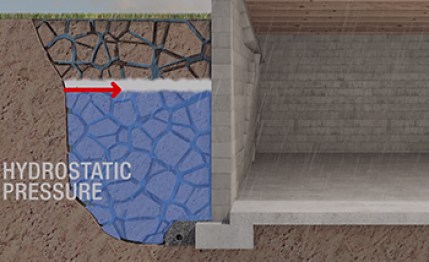
Broadly speaking, hydrostatic pressure is the force per unit area that is exerted on an object by a liquid.
Everything is or can be subject to hydrostatic pressure, even people. The air at sea level presses on us at 14.7 pounds per square inch, but we don’t feel it because the water inside our bodies exerts equal but opposite pressure. Swim a few feet down into a body of water, however, and you will soon notice a difference.
Your home is affected by hydrostatic pressure thanks to the water in the soil that surrounds it. The effect will be most pronounced in properties that have basements. That’s because of the way basement walls are always exposed to the weight of water and soil, especially when the property in question was built on expansive soil. After all, this is most likely to cause a clay bowl to form.
Truthfully, any kind of soil can lead to the formation of a clay bowl because of the process of excavation and backfill needed to construct a property. However, expansive soils tend to be the worst because of the way they absorb and hold water.

What Is the Clay Bowl Effect?
A clay bowl is a name for a space of loose, more absorbent backfill soil surrounded by hard, virgin soil that has much lower drainage capabilities. This means that heavy periods of rain or a lack of proper drainage around your property’s perimeter will lead to water building up inside the “bowl” before it can be drained away.
The result of this will be an extreme increase in hydrostatic pressure because of the weight of the soil, the pressure of its expansion (if it is heavily clay-based), and the weight of the water. All this water around your property perimeter and foundation will have many different implications for the health and well-being of your property and your yard. This has much to do with the cause of the increased hydrostatic pressure.
What Causes an Increase in Hydrostatic Pressure?
At the heart of the matter, an increase in hydrostatic pressure is caused by more water being present. The precise source of the water, however, can vary quite dramatically. The most common causes of excessive soil saturation and hydrostatic pressure in and around Grand Junction, Colorado, are:
Plumbing Leaks and Floods
A property’s plumbing system is vital, and when it ruptures or breaks down, it can upset the flow of your entire home in a day. It can also wreak havoc on your belongings, décor, and if the flood is serious, your home’s structure. A prolonged or particularly heavy flood can also endanger your foundation.
A plumbing flood that is ongoing for a few hours or more will pump an alarming amount of water out into your yard. This will saturate the soil around your property’s perimeter and increase the hydrostatic pressure that your home is subjected to.
Extreme Weather
Extreme weather is one of the most common and unavoidable causes of soil saturation and increased hydrostatic pressure for homes in Colorado. A flood is one of the most serious examples, but even a heavy rainstorm or prolonged days of average rainfall can be enough to tip the balance.
You should check your property for signs of foundation saturation and soil wash out after every large or heavy storm. You should also check the inside of your home for signs of dampness and damage.
Poor Foundation Drainage
Foundation drainage is key to maintaining the health and well-being of your property and preventing excessive soil saturation. By ensuring that water is properly gathered and disposed of, your drains and gutters go a long way toward lowering hydrostatic pressure around your home.
Poor drainage will increase hydrostatic pressure as well as the risk of flooding, dampness, and lateral movement in your property’s foundation. There are a few reasons to keep an eye on the health of your drains and gutters.
Each of these issues can lead to an increase in the soil saturation around a property, and as such, considerable damage to the structure of the property in question.
Hydrostatic Pressure
FAQ's
Since hydrostatic pressure is simply the weight of water around your home, rainfall absolutely increases this level of pressure. However, the increase is usually minor.
Rain Raises the Water Table
Even a small amount of rain will add to the level of hydrostatic pressure in your Grand Junction, Colorado, home, but unless the rainfall is significant and prolonged, it is unlikely to add enough water weight to cause serious damage to your home. This is not the only thing you need to worry about when rain starts falling, however, as any amount of rainfall will affect the water table.
The water table is the level at which the soil or substrate is permanently saturated with groundwater. Rainfall can cause this level to rise closer to the surface. If the water table reaches your foundation or basement walls, the amount of hydrostatic pressure they experience will rise heavily and quickly. This can cause damage very easily.
Flooding Adds Serious Pressure
Localized flooding because of heavy and persistent rain, drain overflow, or a rise in the level of a local river presents real damage to your property. Primarily, serious flooding can lead to water entering your home and causing widespread damage to its structure and your belongings (as well as posing a risk to your health and well-being). However, even less severe flooding can increase hydrostatic pressure dramatically.
After all, hydrostatic pressure is about the water in the soil, not water in your home. So even if the flooding in your local area remains low, you should check your home for signs of damage, as the water table will be much higher than usual. Look for cracks, unevenness in your walls, and dips or bulges in your flooring.
Yes. There are some things you can do to protect your home from excessively high levels of hydrostatic pressure and the damage that it can cause.
Yard Work
A little yardwork can go a long way when it comes to managing and reducing hydrostatic pressure around your property. The idea is to remove obstructions to effective drainage and to improve your yard’s ability to manage moisture where possible.
First and foremost, you should remove debris from your yard and perimeter in the fall. Raking leaves may not feel glamorous or important, but it will make a difference. Secondly, you should look for dips and craters around your yard and foundation perimeter. Ideally, your yard should direct water away from your home in a consistent manner. You can also consider how you plant your yard. The right mix of flowers, plants, and bushes can seriously increase your property’s moisture management capabilities.
Drainage Options
Your property’s drainage capabilities are all important to the management of saturation and hydrostatic pressure around your home. At the most basic level, this means maintaining and caring for your existing drainage systems as well as you can. Seasonal cleaning and maintenance, the removal of blockages, and the addition of trivial things like extended downspouts can really make all the difference.
If you want to go one step further, you can also invest in more robust drainage options. Installing a sump pump in your home, for example, will make a stark difference to levels of relative humidity and dampness in your home. It will also prevent foundation flooding and flooding inside your basement or crawl space.
If the damage has already been done, you will need to address the root cause (hydrostatic pressure), as well as the damage and secondary issues.
The Process
When repairing the fallout of excessive hydrostatic pressure, the first step will generally be draining your basement or crawl space. This is not always the case, but when hydrostatic pressure creates cracks in the structure of a property, flooding and dampness are likely. Once standing water has been removed, the process of keeping it out begins.
The next step is the stabilization and repair of structural problems like bowing walls, foundation damage, and fragmentation. Once these issues have been dealt with, the structural damage and mitigated the elevated levels of hydrostatic pressure, internal repairs can begin. This means removing mold and mildew and repairing damaged joists, for example.
Do Not Try DIY
It is especially important that you do not try to undertake DIY when you see signs of structural damage and excessive hydrostatic pressure. While we understand the temptation to act quickly and save money by doing the work yourself, this can be incredibly damaging for your home and even dangerous to your health and well-being. This is partly because of the likelihood of structural issues.
Structural damage is the one area that we really recommend you never stray into as a non-professional. Even the best DIY enthusiast is not equipped to undertake something like foundation repair or wall stabilization and straightening. Professionals, by contrast, have the tools, training, and products that they need to give a great result at a better long-term price.
Since hydrostatic pressure is simply the weight of water around your home, rainfall absolutely increases this level of pressure. However, the increase is usually minor.
\n\n\n\nRain Raises the Water Table\u00a0
\n\n\n\nEven a small amount of rain will add to the level of hydrostatic pressure in your Grand Junction, Colorado, home, but unless the rainfall is significant and prolonged, it is unlikely to add enough water weight to cause serious damage to your home. This is not the only thing you need to worry about when rain starts falling, however, as any amount of rainfall will affect the water table.
\n\n\n\nThe water table is the level at which the soil or substrate is permanently saturated with groundwater. Rainfall can cause this level to rise closer to the surface. If the water table reaches your foundation or basement walls, the amount of hydrostatic pressure they experience will rise heavily and quickly. This can cause damage very easily.
\n\n\n\nFlooding Adds Serious Pressure\u00a0
\n\n\n\nLocalized flooding because of heavy and persistent rain, drain overflow, or a rise in the level of a local river presents real damage to your property. Primarily, serious flooding can lead to water entering your home and causing widespread damage to its structure and your belongings (as well as posing a risk to your health and well-being). However, even less severe flooding can increase hydrostatic pressure dramatically.
\n\n\n\nAfter all, hydrostatic pressure is about the water in the soil, not water in your home. So even if the flooding in your local area remains low, you should check your home for signs of damage, as the water table will be much higher than usual. Look for cracks, unevenness in your walls, and dips or bulges in your flooring.
\n” } }, { “@type”: “Question”, “name”: “Can I Lower Hydrostatic Pressure Around my Home?”, “acceptedAnswer”: { “@type”: “Answer”, “text”: “\nYes. There are some things you can do to protect your home from excessively high levels of hydrostatic pressure and the damage that it can cause.
\n\n\n\nYard Work\u00a0
\n\n\n\nA little yardwork can go a long way when it comes to managing and reducing hydrostatic pressure around your property. The idea is to remove obstructions to effective drainage and to improve your yard\u2019s ability to manage moisture where possible.
\n\n\n\nFirst and foremost, you should remove debris from your yard and perimeter in the fall. Raking leaves may not feel glamorous or important, but it will make a difference. Secondly, you should look for dips and craters around your yard and foundation perimeter. Ideally, your yard should direct water away from your home in a consistent manner. You can also consider how you plant your yard. The right mix of flowers, plants, and bushes can seriously increase your property\u2019s moisture management capabilities.
\n\n\n\nDrainage Options\u00a0
\n\n\n\nYour property\u2019s drainage capabilities are all important to the management of saturation and hydrostatic pressure around your home. At the most basic level, this means maintaining and caring for your existing drainage systems as well as you can. Seasonal cleaning and maintenance, the removal of blockages, and the addition of trivial things like extended downspouts can really make all the difference.
\n\n\n\nIf you want to go one step further, you can also invest in more robust drainage options. Installing a sump pump in your home, for example, will make a stark difference to levels of relative humidity and dampness in your home. It will also prevent foundation flooding and flooding inside your basement or crawl space.
\n” } }, { “@type”: “Question”, “name”: “Can I Repair Damage Caused by Hydrostatic Pressure?”, “acceptedAnswer”: { “@type”: “Answer”, “text”: “\nIf the damage has already been done, you will need to address the root cause (hydrostatic pressure), as well as the damage and secondary issues.
\n\n\n\nThe Process\u00a0
\n\n\n\nWhen repairing the fallout of excessive hydrostatic pressure, the first step will generally be draining your basement or crawl space. This is not always the case, but when hydrostatic pressure creates cracks in the structure of a property, flooding and dampness are likely. Once standing water has been removed, the process of keeping it out begins.
\n\n\n\nThe next step is the stabilization and repair of structural problems like bowing walls, foundation damage, and fragmentation. Once these issues have been dealt with, the structural damage and mitigated the elevated levels of hydrostatic pressure, internal repairs can begin. This means removing mold and mildew and repairing damaged joists, for example.
\n\n\n\nDo Not Try DIY\u00a0
\n\n\n\nIt is especially important that you do not try to undertake DIY when you see signs of structural damage and excessive hydrostatic pressure. While we understand the temptation to act quickly and save money by doing the work yourself, this can be incredibly damaging for your home and even dangerous to your health and well-being. This is partly because of the likelihood of structural issues.\u00a0
\n\n\n\nStructural damage is the one area that we really recommend you never stray into as a non-professional. Even the best DIY enthusiast is not equipped to undertake something like foundation repair or wall stabilization and straightening. Professionals, by contrast, have the tools, training, and products that they need to give a great result at a better long-term price.
\n” } } ] }What Damage Can Excessive Hydrostatic Pressure Cause?
Hydrostatic pressure may be a natural occurrence that all homes must withstand, but there is a limit to what the average home can deal with. If the level of hydrostatic pressure around your home becomes too high, it can cause several issues including, but not limited to:
Spreading Cracks
If your home is being impacted by extreme hydrostatic pressure, one of the first issues that you are likely to encounter will be spreading cracks. Unlike hairline cracks, which are too small to fit a credit card into, and stable cracks, which are signs of past damage, spreading cracks represent ongoing damage to your home.
As such, spreading cracks are actively growing in length, depth, and width. This makes them a danger to your home in a wider sense, as they will let in water, destabilize the affected structures, and lead to fragmentation or even collapse.
Foundation Damage
Saturated soil can cause foundation damage in several ways. Excessive hydrostatic pressure may cause a foundation to start to crack and deform, but there are also issues that can arise because of the change in soil texture. Soil that is very saturated can become loose or marshy and may lose its capability to bear weight or start to move laterally.
This will lead to issues in the foundation of any property that is reliant on the soil. Lateral movement or soil washout can cause the property to shift sideways as a whole, but this is not overly common. It is far more likely, instead, that the property will start to sink into the marshy ground, or that soil movement will leave voids under the foundation.
When voids form underneath a property’s foundation, it can lead to the foundation cracking and settling into the spaces left behind. This is a fundamental problem that will damage the property in its entirety over time.
Flooding
Any damage to the structure of your property has the potential to allow water into your home, but when the damage is caused by strong hydrostatic pressure, this can lead to flooding. The same hydrostatic pressure that causes cracks will push the water in the soil through any gape, space, or crack that it can find. This will lessen the hydrostatic pressure slightly but will cause a different kind of issue.
Flooding because of hydrostatic pressure is most common in properties that have basements because of their subterranean placement. However, properties with crawl spaces can also find that foundation damage caused by hydrostatic pressure leads to flooding and generalized dampness.
Bowing Walls
If you have a basement in your property, excessive hydrostatic pressure can lead to a unique and worrying phenomenon: bowing walls. These are a real danger to your health and the stability of your property. Caused by relatively low tensile strength of concrete and the presence of strong lateral hydrostatic pressure, bowing walls are those that have started to deform and lean or buckle inward.
This is not just an issue because of the aesthetic issues and spreading cracks that it will lead to. Bowing walls will also let in water and start to separate from the walls and floors that they should be connected to. When this happens, they will destabilize the whole structure of your home. If left to grow unchecked, bowing walls can also collapse.
These issues are bad enough on their own, but they can cause secondary forms of damage that should not be underestimated or discounted. If you act quickly, you could avoid secondary damage altogether.
Secondary Damage
There are a few secondary issues that can be caused by an excess of hydrostatic pressure. Almost all of them are caused by the dampness that is a common result of cracking and buckling. For example:
Wood Rot
Wood rot is one of the most damaging issues that can arise because of prolonged dampness in a home. Caused by the growth of fungal spores that aid in the decay of dead wood, this is a process that will lead to serious structural damage and even collapse if it is not rectified quickly. Wood rot comes in three main forms: brown rot (sometimes called dry rot), white rot, and soft rot. Each is caused by a different form of fungal spore and presents slightly different signs, but all change the texture of the wood and make it weak, brittle, or soft.
Mold and Mildew
Like wood rot, mold and mildew are caused by fungal spores and dampness. Unlike wood rot fungus, however, mold is not likely to cause the flooring to collapse. Instead, it is dangerous to your health. While many forms of mold are benign, there are some that can be actively toxic to humans and animals. The most worrying is black mold that can cause migraines, skin irritation, eye and throat irritation, dizziness, and difficulty in breathing.
Bad Odors
Bad odors in your home might not seem like a terrible issue in the grand scheme of things, but it will make the environment in your home unpleasant. Furthermore, a persistent bad odor (that doesn’t go away even when you undertake a deep clean and air out your home) is most likely a sign of an underlying issue like mold formation, wood rot, or even pest infestation.
Uneven or Sagging Floors
Dampness, mold, pest infestation, and the presence of wood rot fungus can all come together to cause uneven or sagging floors by damaging supports, joists, and floorboards. This will lead to the joists failing and the floor sagging before finally collapsing. If the hydrostatic pressure around your home has caused serious structural damage and movement, the sagging or uneven flooring could be the result of this movement.
As you can see, it is incredibly important to avoid excessive hydrostatic pressure where possible, and where you suspect that there is damage in your home, you must act quickly to ensure that the damage is nipped in the bud.
Contact Foundation Repair of Western Colorado for Expert Help and Advice
If you suspect there is damage to your foundation (or the wider structure of your property) and you think hydrostatic pressure may be to blame, please call Foundation Repair of Western Colorado today. Our team is based in Grand Junction, Colorado, and has years of collective experience to bring to the table, so you can be certain that we will be able to help you restore your home to full health.
It all starts with a free inspection appointment. These appointments come with no obligation to book repairs through us, and your inspector will provide you with a written estimate for the cost of their suggested repairs.
The sole purpose of a foundation is to elevate your home from the soil below. The soil itself is also a crucial component of the foundation’s stability. Unfortunately, soil protection is one aspect that homeowners tend to overlook.
Indeed, failure to compact or protect this soil can inevitably lead to foundation damage that could have been prevented. Let’s take a closer look into how inadequate foundation soils can cause your foundation to fail, what problem signs you can watch out for, and how Foundation Repair of Western Colorado’s solutions can help.
Common Causes of Foundation Damage
Some homeowners might want to know how such an important structure like your foundation could even be susceptible to damage in the first place. Here are some of the most common causes of foundation damage below.
Foundation Soils and Settling
The soil surrounding and underneath your foundation is critical to maintaining its structural integrity. Without properly compacted soils used to support the foundation, it will likely shift out of its original placement, settle, and even crack apart.
One way the foundation’s supporting soils can become undermined is through a phenomenon referred to as the clay bowl effect. When contractors first plan to build a home, they will assess the soil of the area they plan to build on. They will then dig a large hole where they plan to lie down your foundation and either a basement or crawl space.
After each component is set into place, there will typically be some space left around these structures. The contractors will then backfill some of the soil they previously dug up back into this space. This essentially creates the “clay bowl” around the foundation.
This soil is much looser than it used to be, which can make it even more susceptible to washing out during a storm or when substantial amounts of snowmelt in the spring. Without this soil, your foundation will start to shift or settle further into the earth. This settling or shifting may also cause the foundation to crack as well.
Another factor that can negatively impact these soils is wild tree roots growing around the foundation itself. Though these tree roots are not technically strong enough to push through the concrete itself, they will take up all the moisture within the soils around your foundation. Tree roots may also push these looser soils around as they search for moisture to drain away.
This can then cause the soil itself to shrink or at the very least become less compact. Again, with this soil now becoming weaker or more brittle, it increases the chances of your foundation settling further into the earth.
It is best to take steps to not only waterproof your foundation but the surrounding soil around it as well. This will prevent it from washing out during any harsh storms and deter tree roots from attempting to grow through it and dry out the soils. However, the best preventative measure you can take is to have your foundation inspected every year by the foundation experts at Foundation Repair of Western Colorado.
Hydrostatic Pressure
The soil surrounding your foundation is also prone to absorbing far more moisture than it is realistically capable of holding. This is largely due to Colorado’s clay and sandy loam soils. Soil that is mostly comprised of clay tends to absorb a lot of moisture. This is because moisture moves slower through clay soils than other types of soil, which means that it will take longer for that water to drain out or evaporate.
If this soil is not washed out by that moisture, the combined weight of the water and soil can create immense pressure against your foundation. This pressure can even be enough to shift your foundation out of its original placement or even crack it apart. Contractors and experts refer to this phenomenon as hydrostatic pressure. It is common and affects homes all over the world.
Hydrostatic pressure can also occur in another form as well. If the water has not drained out or evaporated, then it may have become trapped in the pores of your concrete foundation. This itself will not cause any problems. Come wintertime, however, these trapped droplets can freeze over, expand, and eventually cause your foundation to crack from within.
Soil Shrinkage and Compaction
If the supporting soils keep constantly being washed out and left to dry, it is possible that they will start to shrink and compact even closer together. This leaves your foundation with even less of a surface area of soil to support itself and your home. That alone can cause the foundation to settle or shift.
When any moisture does seep into the soil again, the once-dry soil will then suddenly swell up again. In Grand Junction, Colorado, this swelling can easily create either hydrostatic pressure against the foundation or even push your foundation upward or disrupt other structures around your home (such as the surrounding concrete sidewalk, for instance). This disruption is commonly referred to as heaving and can create harsh cracks along the corners of your home creeping upward.
This is also known as the swell-shrinkage capacity. Soils that are mainly made up of a clay mixture are especially vulnerable to this due to the fact that water moves slowly through it when it swells. Clay soils are also the best for building on top of, too. Conversely, soils that have a lack of clay content tend to wash out easier, so contractors need to always take the pros and cons into consideration before deciding to go with a different soil mixture.
The swell-shrinkage capacity of the soil can be measured through the volume of water content already on the surface, the specific type of clay or soil type, and the overall ratio of clay mixed into the soil. Thus, Colorado’s high clay loam soils tend to be rife with swell-shrinkage issues.

Problem Signs of Foundation Damage
Most homeowners will not know if their foundation itself is cracked or damaged. Fortunately, there are various problem signs that may crop up in other parts of your home that you will be able to spot to know if your foundation is damaged.
Leaks
Your basement is perhaps the first place you may notice that something is wrong with your foundation. You might notice that leaks have sprung in your basement, leading to random pools along your floor or even massive floods that do not drain out.
Even small leaks have the potential to grow larger and flood your basement or other parts of your home. This is why it is not wise to ignore any leaks you see no matter what.
Cracks
Cracks are perhaps the most obvious sign of foundation damage that you will be able to spot. If your foundation is cracked, then it makes sense that your basement or crawl space floor or walls would be cracked as well. These cracks can easily spread out to other parts of your home, including the concrete surrounding your home, so it is best to call the foundation experts to repair them as soon as you see them.
Any cracks that measure less than 1/8 inches wide are referred to as hairline cracks and may be left alone for a brief period. Cracks that measure anywhere between 1/8 and 1/4 inches wide may also be left alone for some time, but you should schedule an appointment with one of our experts to patch it up and inspect your foundation.
Any cracks that measure wider than 1/4 inches wide, however, need immediate attention.
Sagging Floors
Another sign that your foundation is damaged is if your floor seems to sag or bounce in places. It is possible that your foundation has shifted or settled, which can cause the support beams of your floor to shift and crack as well. This then leads your floor without a stable support system, thus leading it to sag and create tripping hazards all around your home.

Stuck Doorways and Windowsills
Many homeowners will attribute a hard-to-open door or window to mere age. This might be true in some cases, but the possibility that this might be due to a shifted or cracked foundation should not be ignored, either. If your foundation becomes damaged, other structures in your home will start to lean or sway. Thus, your doors and windows might become trapped in the tilted frames and become much harder to open and close.
Tilting Walls
Perhaps the most dangerous sign that your foundation is damaged is when your very walls start to tilt. This is often a sign that your home is on the verge of collapsing altogether. You need to take steps to protect your foundation and the soils surrounding it long before it ever reaches this point.
Foundation Soils
FAQ's
It might sound ridiculous that something as vulnerable as soil is used to support your foundation and your whole home. Some homeowners might wonder how it is even able to protect your foundation at all given its brittle nature.
Soil Type
The type of soil is also taken into consideration before building a house over a property. Compact soils are the best soils to build over given their inherent strength and ability to bear heavy weights, but contractors will not always have this luxury. Fortunately, Grand Junction, Colorado, has mostly clay loam soils, which are perhaps one of the best soil types to build on.
In this case, contractors will not need to rely on digging into additional layers as extra support for the foundation. However, in the case that the soil is mainly made up of sand or other looser material, then this can present issues. To prevent this looser soil from washing out, contractors may need to add an extra gravel bed layer or work into other layers as support instead.
Soil Layers
When contractors first go about building a home, they will look into the soil already present in the area they plan to build on. Sometimes the top layer of soil, known as the subgrade layer, will be the only layer the contractors will need to consider when constructing a new building. Again, Colorado’s firm clay loam is great for this.
Artificial gravel layers are typically only used when this top layer is too loose to work with. This layer is referred to as the subbase layer, and its main purpose is to slow down the flow of any groundwater or other moisture seeping into the soil. This prevents this moisture from washing out the looser subgrade layer altogether. Multiple base layers may need to be laid down if the soil is especially loose or unstable, too.
When it comes to something as important as your foundation, it is best to leave any repairs you might need to the experts at Foundation Repair of Western Colorado.
Why DIY Repairs Are Not Recommended
The foundation is perhaps the most vital structure to your home’s overall health. It is not something that just anyone should attempt to repair on their own. You may accidentally damage it even further, leading to more costly repairs further in the future. It is best to call the foundation experts to assess where the true cause of damage lies.
Similarly, any DIY repair methods sold at your local home improvement stores will not be strong enough to fully protect your foundation nor the soils supporting it and your home. At best, they can offer temporary relief to your issues while you schedule an appointment with our experts.
Leave It to the Foundation Experts
The foundation experts at Foundation Repair of Western Colorado are trained to assess and repair all issues your foundation could likely face. We will have all the right tools and equipment for this delicate repair job, so you will not have to worry about performing any preemptive repairs on your own. In fact, it is always best to leave these repairs to the foundation experts for both your budget and safety. It is possible that you might accidentally damage another part of your foundation when you are attempting to fix it up again. This is why when you spot any problem signs at all, it is best to call the foundation experts at Foundation Repair of Western Colorado to circumvent the worst damage.
Let’s take a quick look into some of the other foundation repair solutions we at Foundation Repair of Western Colorado can offer your home.
Carbon Fiber Wall Straps
Though wall anchors and our piers systems might be tough repair solutions, they may not be the best solution for every home. This is because wall anchors typically require a specific amount of yard space to install. If your yard does not have this ample space, our experts may then resort to installing alternative foundation repair solutions.
Our carbon fiber wall straps might not look as if they can repair an entire foundation, but do not underestimate its strength. Carbon fiber is one of the toughest materials out there, being around 10 times stronger than steel. It is used to create heavy-duty sports equipment, racecars, and even aircraft. When these straps are attached to your wall with our equally powerful epoxy resin, you can rest easy knowing that your basement walls will be slowly repaired again over time.
IntelliBrace™ I-Beam System
Our IntelliBrace™ I-beam system is yet another alternative to wall anchors that you might prefer over our carbon fiber wall straps. Essentially, they have the same function as these wall straps, only they are galvanized steel I-beams strategically braced to your basement wall instead of a thin strap. These beams are light and will take roughly the same time to install as our carbon fiber straps.
The main difference between the carbon fiber wall straps and our IntelliBrace™ system is the fact that the I-beams will need to be tightened over time whereas the wall straps can be left as is. This is because each beam is braced to your wall in a way that will slowly repair the cracks and damage over time. This much slower tightening method then ensures that any larger bowing issues (such as bowing that is more than two inches) will close without disrupting other parts of your home.
It might sound ridiculous that something as vulnerable as soil is used to support your foundation and your whole home. Some homeowners might wonder how it is even able to protect your foundation at all given its brittle nature.
\n\n\n\nSoil Type\u00a0
\n\n\n\nThe type of soil is also taken into consideration before building a house over a property. Compact soils are the best soils to build over given their inherent strength and ability to bear heavy weights, but contractors will not always have this luxury. Fortunately, Grand Junction, Colorado, has mostly clay loam soils, which are perhaps one of the best soil types to build on.
\n\n\n\nIn this case, contractors will not need to rely on digging into additional layers as extra support for the foundation. However, in the case that the soil is mainly made up of sand or other looser material, then this can present issues. To prevent this looser soil from washing out, contractors may need to add an extra gravel bed layer or work into other layers as support instead.
\n\n\n\nSoil Layers\u00a0
\n\n\n\nWhen contractors first go about building a home, they will look into the soil already present in the area they plan to build on. Sometimes the top layer of soil, known as the subgrade layer, will be the only layer the contractors will need to consider when constructing a new building. Again, Colorado\u2019s firm clay loam is great for this.
\n\n\n\nArtificial gravel layers are typically only used when this top layer is too loose to work with. This layer is referred to as the subbase layer, and its main purpose is to slow down the flow of any groundwater or other moisture seeping into the soil. This prevents this moisture from washing out the looser subgrade layer altogether. Multiple base layers may need to be laid down if the soil is especially loose or unstable, too.
\n” } }, { “@type”: “Question”, “name”: “Can I Repair My Foundation Myself?”, “acceptedAnswer”: { “@type”: “Answer”, “text”: “\nWhen it comes to something as important as your foundation, it is best to leave any repairs you might need to the experts at Foundation Repair of Western Colorado.
\n\n\n\nWhy DIY Repairs Are Not Recommended\u00a0
\n\n\n\nThe foundation is perhaps the most vital structure to your home\u2019s overall health. It is not something that just anyone should attempt to repair on their own. You may accidentally damage it even further, leading to more costly repairs further in the future. It is best to call the foundation experts to assess where the true cause of damage lies.
\n\n\n\nSimilarly, any DIY repair methods sold at your local home improvement stores will not be strong enough to fully protect your foundation nor the soils supporting it and your home. At best, they can offer temporary relief to your issues while you schedule an appointment with our experts.
\n\n\n\nLeave It to the Foundation Experts\u00a0
\n\n\n\nThe foundation experts at Foundation Repair of Western Colorado are trained to assess and repair all issues your foundation could likely face. We will have all the right tools and equipment for this delicate repair job, so you will not have to worry about performing any preemptive repairs on your own. In fact, it is always best to leave these repairs to the foundation experts for both your budget and safety. It is possible that you might accidentally damage another part of your foundation when you are attempting to fix it up again. This is why when you spot any problem signs at all, it is best to call the foundation experts at Foundation Repair of Western Colorado to circumvent the worst damage.
\n” } }, { “@type”: “Question”, “name”: “What Other Foundation Solutions Are There?”, “acceptedAnswer”: { “@type”: “Answer”, “text”: “\nLet\u2019s take a quick look into some of the other foundation repair solutions we at Foundation Repair of Western Colorado can offer your home.
\n\n\n\nCarbon Fiber Wall Straps\u00a0
\n\n\n\nThough wall anchors and our piers systems might be tough repair solutions, they may not be the best solution for every home. This is because wall anchors typically require a specific amount of yard space to install. If your yard does not have this ample space, our experts may then resort to installing alternative foundation repair solutions.
\n\n\n\nOur carbon fiber wall straps might not look as if they can repair an entire foundation, but do not underestimate its strength. Carbon fiber is one of the toughest materials out there, being around 10 times stronger than steel. It is used to create heavy-duty sports equipment, racecars, and even aircraft. When these straps are attached to your wall with our equally powerful epoxy resin, you can rest easy knowing that your basement walls will be slowly repaired again over time.
\n\n\n\nIntelliBrace\u2122 I-Beam System\u00a0
\n\n\n\nOur IntelliBrace\u2122 I-beam system is yet another alternative to wall anchors that you might prefer over our carbon fiber wall straps. Essentially, they have the same function as these wall straps, only they are galvanized steel I-beams strategically braced to your basement wall instead of a thin strap. These beams are light and will take roughly the same time to install as our carbon fiber straps.
\n\n\n\nThe main difference between the carbon fiber wall straps and our IntelliBrace\u2122 system is the fact that the I-beams will need to be tightened over time whereas the wall straps can be left as is. This is because each beam is braced to your wall in a way that will slowly repair the cracks and damage over time. This much slower tightening method then ensures that any larger bowing issues (such as bowing that is more than two inches) will close without disrupting other parts of your home.
\n” } } ] }Foundation Repair Solutions by Foundation Repair of Western Colorado
It might seem impossible to repair your foundation on your own. Fortunately, Foundation Repair of Western Colorado will have all the tools and solutions to repair your foundation for you.
Wall Anchors
By installing wall anchors in strategic areas around your yard, they can transfer the strength of these more compact soils to your foundation and brace it against any future threats that might cause it to shift, bow, or crack.
Piers Systems
Like the wall anchor system, our piers systems will settle into the more stable layers of your soil to provide support from directly below. We can offer your home two different piers systems: helical piers and push piers. The only real difference between them lies in how they are installed.
Helical piers have spiral-like attachments at the end that allow our experts to hydraulically drill them into the soil underneath your foundation. As its name implies, a push pier is manually pushed into the soil by one of our foundation experts. Each pier is typically braced to the underside of your foundation to keep them in place while they continue to brace your foundation against any damage it is likely to face.
Contact the Foundation Experts at Foundation Repair of Western Colorado
Your foundation needs to be protected against any forms of damage that might threaten to move or damage it. Though some homeowners might be savvy enough to have the foundation itself waterproofed, the same cannot be said for the surrounding soils that support this structure.
This soil is critical to your foundation’s overall health and maintenance. You need to watch out for damage that can threaten to disrupt that soil as much as the foundation itself. Fortunately, calling a foundation expert for advice and repairs is simple and can be implemented quickly if you catch this damage in time.
Contact the foundation experts at Foundation Repair of Western Colorado for a free foundation inspection today. You can also ask for free quotes on all our powerful foundation repair solutions during our visit as well. We serve clients all throughout Grand Junction, Colorado.
While sandy soils remain stable as water passes through them, soils rich in clay undergo significant changes based on their moisture content.
When clay type soils dry out, they shrink significantly — so much that the ground can become covered with cracks. But after a heavy rain, the cracks are gone and the soil is fully saturated with water.
Because clay soil absorbs so much water, it expands during wet weather. Expansive clay soils can put enormous pressure on your basement or foundation walls. When the pressure becomes more than the wall can handle, the wall will begin to push inwards.
Mold, musty smells, and leaking basement walls got you down? These leaky basement symptoms won’t go away on their own, and only get worse with time. It’s commonly believed that temporary fixes like basement waterproofing paint, caulk, and spackle will solve your basement problems; but these “solutions” play out more like bandages. Foundation Repair of Western Colorado has more than a decade of experience in high-quality, permanent basement waterproofing. Learn more about what we can do to reinvigorate your basement once and for all.
Is Basement Waterproofing the Right Solution for My Home?
Foundation Repair of Western Colorado has an array of customizable basement waterproofing solutions like superior vapor barriers, interior and exterior drainage systems, dehumidifiers, and more. The snowy Colorado climate can take a toll on your basement and foundation walls; a free inspection with our local waterproofing experts can determine the magnitude of your basement’s damage, and provide you with a no-pressure quote for repairs. Even for small-scale basement concerns, call our experts to rule out structural issues. We’re proud to help restore your faith in your home with more than a decade of foundation and waterproofing expertise.
Resources
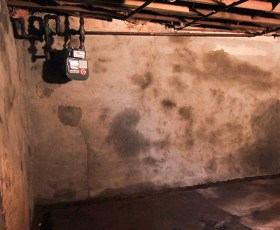




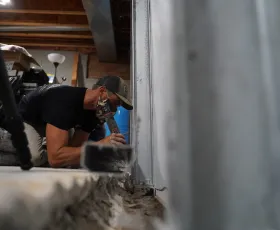
Why Basement Waterproofing Is Needed
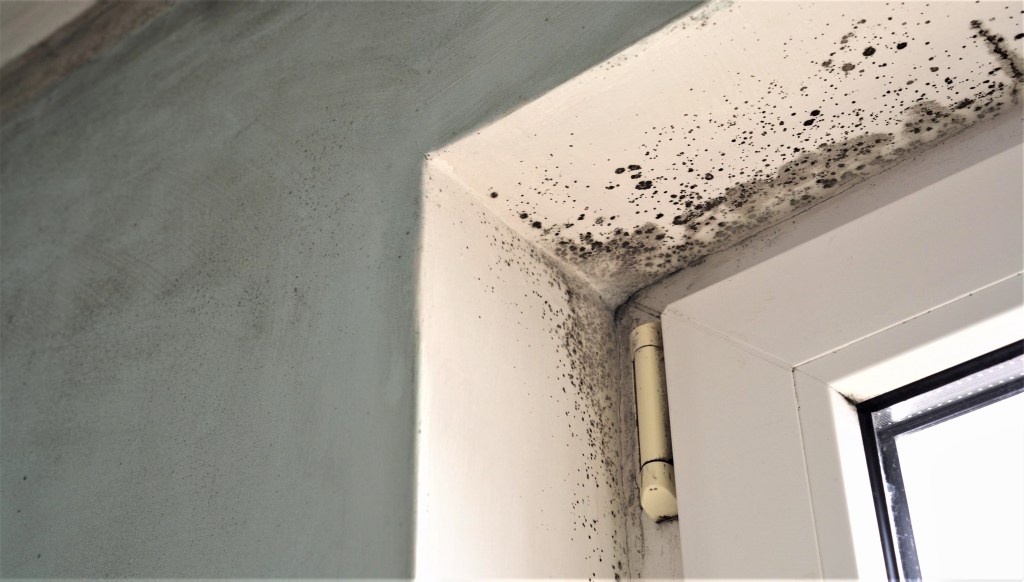
Air Quality
When water is left to sit and fester in your dark basement, it develops mold and mildew. Since these infestations are airborne, the fungi brewing in your basement will rise into your home and affect the air quality in your living space. You may notice a hike in allergy symptoms and even asthma.

Protection from Expansive Soil
Colorado is abundant with rich, clay soil. This is excellent for many things, except for the structure of your home. Clay soil is classified as expansive soil, meaning that when it swells with precipitation from rainwater or snowmelt, it grows larger and exerts hydrostatic pressure on your foundation walls, setting into motion cracking and leaking.

Preparation for Major Weather Events
As a Coloradan, you’re no stranger to heavy snow beginning as early as October. These weather events have a huge impact on your home over a long period of time. Not taking the proper precautions to protect your basement with drainage systems and waterproofing, you can leave it vulnerable to being overwhelmed during tough winters and serious snowmelt.
Find your service area
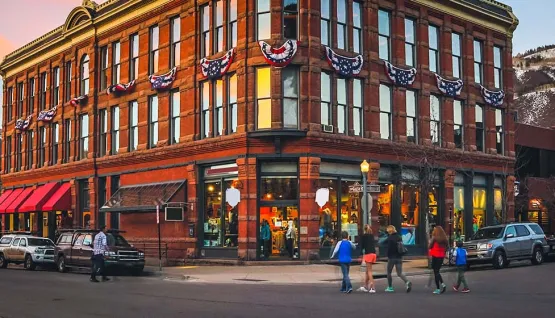
Aspen, Colorado
Known as one of the most famous ski towns in the world, Aspen, CO sees its fair share of foundation, basement, and crawl space damage due to spring thaws and winter freezes.
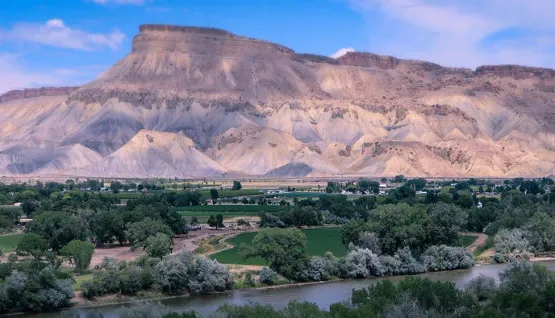
Clifton
If your Clifton, CO home is experiencing issues with foundation slab cracking, basement, or crawl space water damage, or failing wall supports, contact our team at FRWC.
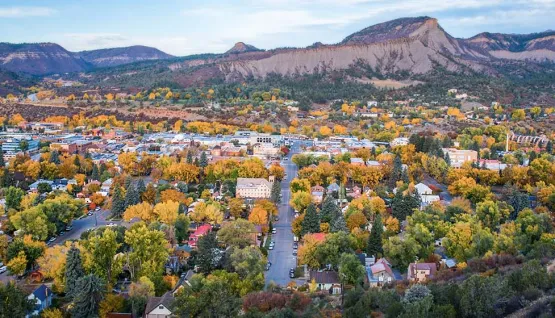
Durango
With Durango’s soil being primarily clay, this can cause a multitude of issues with your home’s foundation and basement because of its poor drainage capabilities.
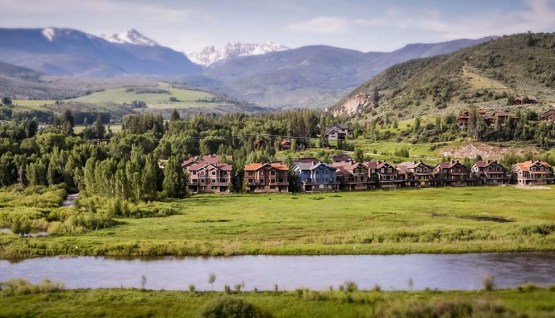
Edwards
Located just 15 miles away from Vail, Edwards, CO, is a sleepy ski town nestled in the heart of the mountains. Unfortunately, the winter season brings its fair share of damage to homeowners' basements and foundations.
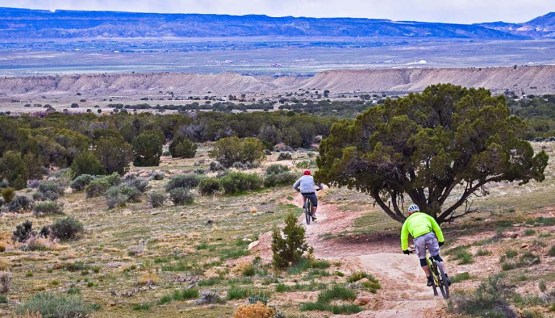
Fruita
Within the Grand Valley, Fruita, CO homeowners see their fair share of foundation, basement, crawl space, and concrete damage around their homes.

Glenwood Springs
Known for their natural hot springs, Glenwood Springs, CO is no stranger to the damaging effects water can have on foundations, basements, and concrete structures.
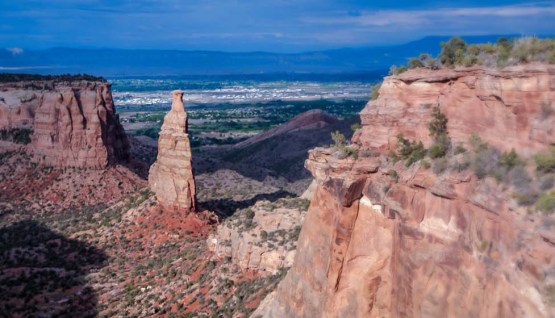
Grand Junction, Colorado
For Grand Junction, CO, homes both big and small, old and new, foundation and basement damage can be both easy to miss and expensive to fix.
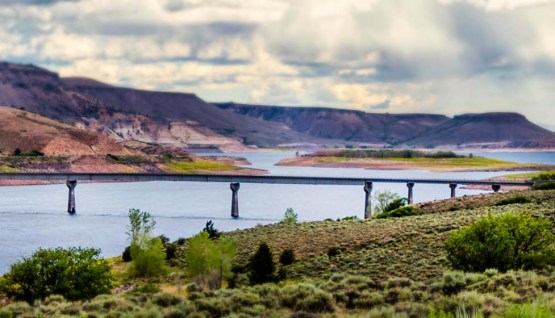
Montrose
Are you looking to buy a home in Montrose, CO? Identifying foundation issues is an important part of selecting a new home to ensure you make a sound investment, while protecting it for the future.
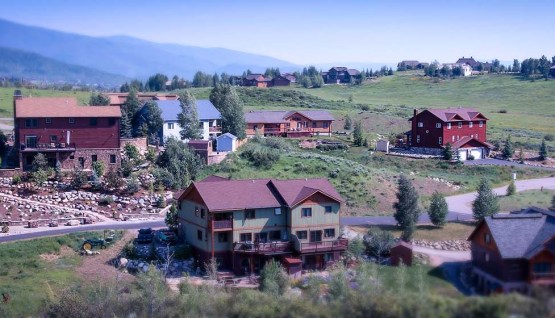
Steamboat Springs
The mix of sand and clay soils in Steamboat Springs, CO can make for a variety of water drainage issues for your foundation and basement.
Common Basement Waterproofing Tips & Mistakes
Three Tips For Basement Waterproofing
- Window Wells. Installing window wells or window well protection can ensure that your required egress windows won’t act as a pain point for your newly waterproofed basement. Window wells also act as an extra safety measure for your egress windows if you ever needed to use them to escape your home; the extra step provides another layer of safety.
- Gutters. A healthy gutter can contribute to a happy basement. When your gutters are working properly, it encourages safe moisture levels in the clay soil around your home and slows down the soil expansion process. If your gutters malfunction or clog, water will pool around your foundation and set hydrostatic pressure into motion.
- Install Backup Measures. When you invest in a sump pump or other drainage systems, it’s important to also consider a backup in the case that your home loses power or your discharge line freezes. A sump pump backup battery or a discharge line FreezeGuard™ should do the trick, in addition to other solutions that your certified field inspector will suggest. Though you may never end up using these solutions, they can be a lifesaver when they do kick into gear.
Mistakes For Basement Waterproofing
- Doing At-Home Waterproofing Repairs. While it’s always important to know how to fix things around your home, basement repair and waterproofing DIYs typically tend to be temporary solutions. Waterproofing professionals at Foundation Repair of Western Colorado know how to find the true source of your foundation issues and apply a permanent solution, so you won’t have to keep trying the latest fad.
- Ignoring Maintenance. Keeping a consistent eye on your basement waterproofing solutions can ensure that they remain permanent solutions. That’s why we offer annual maintenance for the solutions that we install; you can have an expert check up on your basement and ensure it’s still functioning properly.
- Not Paying Attention to Landscaping in Your Yard. Negative yard grading can work against your basement; and if you don’t pay attention to your yard’s landscaping, your foundation will suffer. Negative yard grading means that there’s a slight slope pointing toward your home. This will cause rainwater to flow toward your home and pool around your foundation, which can be detrimental.


